
]It’s been more than six years since Practical Sailor evaluated rigid boom vangs. Given the rapid evolution of sailing hardware, it’s high time we take another close look.
In that May 15, 1999 report, we wrote that Hall Spars and Rigging’s QuikVang was the best all-around product, if you were game to ignore prices. Garhauer Marine’s vang was our Best Buy due to its rugged construction and economical price, and Spinlock’s then new Powervang was the product of choice for the racing set. If you owned a larger boat and wanted a lightweight vang, your best bet was Selden’s Rodkicker. As that 1999 test indicated, determining the appropriate rigid vang for your boat and your style of sailing is not a one-size-fits all affair. The process is fraught with conditional answers that only you can supply.
First, you have to determine if you want a rigid vang primarily for supporting your boom. If that’s the case, then the performance of the vang may be less important to you than the cost and the product’s purported longevity. If you want a vang that will allow you to make fairly precise refinements to your mainsail trim as well as support your boom, you’ll be looking more closely at how easy it is to adjust and its range of adjustability. Then, you have different types. Do you favor a spring-loaded, gas-cylinder, pneumatic, or rod vang?
Our evaluation included all four types. It’s important to note that you shouldn’t install a rigid vang on a boom that rotates, as this will compromise the gooseneck fittings on the vang or the boom itself. Also, standard, off-the-shelf rigid vangs like the ones PS evaluated here are not suitable for use with in boom furling. For those applications, you’ll want heavier duty equipment.
The Test
For this test, PS amassed a group of eight rigid vangs from seven manufacturers. We asked each company to send a vang that would be suitable for a 36-foot sloop with a 13-foot boom. We told them that we were upgrading from a 4:1-purchase soft vang, that our objectives were convenience and safety, and stipulated that there were no suitable fittings on the mast or boom for attaching the new vang. We also mentioned that the mainsail on this boat weighed 50 pounds, and we described the spars as having rectangular grooves for the attachment fittings.
Selden Masts, which manufactures three different sizes of the Rodkicker, loaned us a mast and boom display mounted on a pallet, and we used this as a test platform for each vang. We looked closely at the vangs as well as the mounting fittings, which can vary according to the type of spar you have. We operated each vang multiple times and examined the construction quality, noted the stroke range, maximum return force, as well as the ease of use, and overall weight.
Vang Master
Marine Products Engineering is a small manufacturing firm based in San Pedro, California, that also builds pneumatic actuators for doors, lids, and some other applications. Proprietor and designer Doug Grant has been building vangs for 14 years, and he is the supplier for Melges Boatworks and Ultimate Sailboats. His Vang Masters range in size from from 24 inches to 9 feet.
Grant uses 6061 T6 aluminum tubing that is hard-coat anodized and impregnated with Teflon. The end fittings are also machined from aluminum and hard-coat anodized. Except for the sheave and jaw attachment pins, MPE doesn’t use any stainless steel. These vangs operate with an 8:1 cascading purchase system using Harken blocks (including a ratchet block and cam cleat), the last part of which runs through a sheave in the upper end of the vang.
Grant says he presets the cylinder pressure on each vang, but he also includes a bicycle pump so that an owner can make his own adjustments. To change the pressure, you simply pump the vang up to whatever pressure you need to keep the boom level.
The lightest vang, the Vang Master also provided the smoothest action. This was surprising, because others like the Hall QuikVang or those from Garhauer come with greater mechanical advantage. The Vang Master VM-4 offers 16 to 18 inches of stroke range with up to 500 pounds of return force, and comes with a four-year warranty that covers any breakage under normal use. It sells for $845, including the pump, but not the end fittings ($110 for the boom, $145 for the mast).
Garhauer Marine
Known for its rugged, if heavy, products, Garhauer Marine provides deck hardware for Catalina Yachts. The company supplied two vangs for our test: the RV20-1SL with a stainless outer tube, and the deluxe RV20-1AL, with a 6061 T aluminum outer tube, integrated purchase fittings, and a larger aluminum sheave in the head. Both vangs are intended principally to support the boom and both rely on 1½-inch diameter stainless steel springs — four in each case — to offer the resistance.
Garhauer includes in its price custom mast and boom fittings that are polished, beefy 316 stainless pieces with finely welded or machined components. The vangs featured similarly rugged construction. Except for the composite sheaves built into the vangs’ forked ends, all the sheaves in the 20:1 purchase are anodized aluminum, which spin on Torlon ball bearings.
These vangs have a wide stroke range — 8 to 12 inches — and they reliably returned our boom to the same position. Their construction appears to be bullet-proof (they carry a 10-year warranty) and they have the lowest prices of any vangs that passed our test ($374 for the RV20-1SL, and $429 for the duluxe RV20-1AL, including end fittings). Yes, they’re also the heaviest products, but not by much. Their main disadvantage is that, once they are installed, the resting height is not as adjustable as it is in other vangs.
Forespar
Forespar’s Yacht Rod is made of a polished stainless steel inner tube and an Awl-Grip coated aluminum outer tube, and anodized aluminum forked ends. The Yacht Rod uses a single stainless steel spring for resistance. It’s marketed as both a device for supporting the boom and for trimming the sail in cruising or racing applications.
The Yacht Rod, which is built in three sizes, has a 4:1 tackle using Harken fiddle blocks and 7/16” line. A section of Spectra line attaches to that and runs through an aluminum sheave in the upper end’s fork to create an 8:1 purchase.
Forespar offers several sizes of mast and boom end fittings for its Yacht Rods (sold as part of the package or separately). The majority of these are fashioned from polished stainless steel. The welds on the fittings that were sent to PS were solid and well executed.
The outer tube has four holes at four-inch increments that accept a fast pin to adjust the boom’s height and allow a wide range of resting positions. This would be a handy feature to temporarily lift the boom in order to raise or lower a dodger or bimini. Forespar’s otherwise excellent installation instructions lacked a detailed drawing of the mast end, which would be a big help.
This vang was simple to install and operated fairly smoothly, but the spring did squeak slightly when compressed. The medium-size Yacht Rod has a stroke range of 7 inches, and provides 600 pounds of return force. It comes with a warranty of three years and sells for $873, including the tackle and end fittings.
Hall QuikVang
Roughly five years ago, Hall Spars introduced the pneumatic QuikVang 2000, but, citing “complexities with its use,” has stopped production. Hall plans to introduce a new vang, which we’ll test and present in a future issue. For this evaluation, we looked at the conventional
QuikVang, a top performer in previous tests, and a product that Hall has been building for 20 years.
Marketed principally as a sail-trimming device, the QuikVang has anodized aluminum tubing and end fittings as well as a stainless steel spring. A Delrin plug in the inner tube acts as a piston to compress the spring when the 18:1 purchase system is tensioned. Delrin sleeves between the two tubes reduce friction and snug tolerances between the spring and the outer tubing keep the spring in column. Once installed, you can adjust the vang’s resting height in one-inch increments by loosening the set screws on the adjuster knob.
The purchase system features Harken blocks and Yale Dacron braided line, and includes a ratchet block and cam cleat so you don’t need any additional deck hardware for basic operation. Three parts of the purchase use stainless wire over aluminum sheaves, which are mounted in the jaws of the vang. Hall’s end-fittings are machined from aluminum and then hardcoat anodized.

The QuikVang was easy to install and adjust. It operated smoothly and reliably returned the boom to its initial position. One convenient feature is a ratchet that lets you release the control line under heavy load. And Hall’s booklet of instructions is very complete, including information on installation, operation, and maintenance. This model has a stroke range of 6 inches, 600 pounds of return force, comes with a three-year unconditional warranty, and sells for $906, not including end fittings.
Seoladair’s Boomkicker
Seoladair, a small manufacturing firm just outside of Chicago, IL, produces stowable fenders, rolling boom bales, and the Boomkicker. This product is simple and will suit owners who want something to support their boom and work in tandem with an existing soft vang.
The Boomkicker, which is sold in five sizes for boats from 14 to 38 feet, is simply a set of fiberglass rods. The rods are held captive at either end with hardcoat anodized aluminum collars and attach to the mast and boom via durable, machined and anodized aluminum fittings. Users can further customize the Boomkicker by cutting the rods to a shorter length.
PS found the Boomkicker simple to install and easy to use. The 1500 we tested came accompanied by a 4:1 tackle using Harken blocks (and cam cleat) as well as a short section of Spectra run through an additional block to create an 8:1 purchase. Also included was an aluminum attachment tang for the purchase system, as well as a drill bit, stainless fasteners, and a tap to secure the fittings to the boom. (In most cases, the mast fitting uses the luff groove for attachment and no drilling or tapping is necessary.) At 4.5 pounds, the Boomkicker is the lightest in this test. The model we tested offers 600 pounds of return force with a stroke range of up to 16 inches, and carries a five-year warranty. It sells for $309, not including tackle, which we found for $173.
Last year, Seoladair introduced a new sliding boom fitting, which includes a 16-inch section of aluminum track and a car for the upper end. Without this, the Boomkicker drop outs out of the boom when it’s raised well above horizontal. This is to prevent overloading of the fittings. We’d definitely shell out the extra $108 for the new boom fitting.
Selden’s Rodkicker
Selden’s Rodkickers come in four sizes for boats from 22 to 60 feet and use gas-pistons for their return force. These pistons are mounted inside rectangular anodized aluminum extrusions that are mated to anodized aluminum end-fittings secured with Monel rivets. This vang came with an external 4:1 block and tackle using Rutgerson fiddle blocks with a cam cleat, which Selden sells as an option. The tackle connects to a large stainless wire that runs over a composite sheave integrated into the vang’s upper end fitting, creating an 8:1 purchase.
We tested the Rodkicker 20, which is rated for boats from 35 to 42 feet. To specify its vangs, the company first looks at righting moment and rig type, and thereafter considers the weight of the boom and sail. The Rodkicker 20 claims a stroke range of seven inches and a return force of 876 pounds using the normal gas piston. The inner extrusion is capped by a composite plug, which acts as a bushing.
It took PS testers about 20 minutes to read the instructions and assemble the Rodkicker 20, which arrived in three boxes. It mounted easily to the machined boom (aluminum) and mast (stainless steel) fittings that the company supplied. The first time we used it, this vang took the most force (roughly 60 pounds) to compress, but it operated smoothly after that. Bernie Beasley at Selden told us that operation of each vang relies on the weight of a full boom and sail resting on it. With that factored in, he said, we wouldn’t have experienced as much initial resistance.
Selden offers a two-year warranty on the Rodkicker. The 20 sells for $685, not including tackle. We were impressed by several aspects of this vang. Where clevis pins are used to connect the vang to the boom and mast, the end fittings have recesses to keep the cotter pins from sticking out and doing damage. And the boom fitting uses three Allen screws for attachment. These can either be tapped into the spar or dogged down for compression attachment. Selden also offers a universal boom bale for booms without an integral track.
Sparcraft
Based in France, Sparcraft has manufacturing facilities for mast, booms, and rigging systems there and in the United States at Charleston Spars in Charlotte, North Carolina. The Ocean Vang uses anodized aluminum tubes that compress a stainless steel spring by way of an external 4:1 purchase system to deliver a return force of 300 pounds The vang has sheaves integrated into its end fittings, and there are no external blocks, which simplifies the arrangement, but limits the amount of purchase available. (Some vangs are sold with additional external tackle.) The polished, 316 stainless-steel brackets for mast and boom come in various sizes and configurations.
Installation was simple and straightforward, which was good because the vang arrived with no instructions. You’ll need to lead the the control line to a swiveling, pivoting block mounted on deck because the sheaves in the vang don’t articulate and the line won’t otherwise lead in a fair fashion when the boom is off centerline.
PS found two problems with the Ocean Vang. Its spring was squeaky and it didn’t regularly return the boom to its initial point after we installed it. When we opened the unit, we found that the design doesn’t keep the spring in column. When the spring moves off-center — as is almost certain to occur any time the spring is under load — the spring rubs directly on the outer tube, producing friction and squeaking. We applied some WD 40 and the vang worked more smoothly and squeaked less, though it still didn’t perform satisfactorily.
Jim Kulibert, Charleston Spars’ director of sales, told us that our experience was an anomaly. He says the company has furnished hundreds of these vangs to boats over the years and they never receive complaints of squeaks or binding.
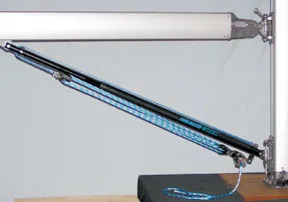
This size Ocean Vang retails for $279, which includes the control line, but not the brackets for the mast ($39) or boom ($42). The vang carries a one-year warranty.
Conclusions
For cruising sailors, it’s most important that a rigid vang works to support the boom and secondarily to trim the mainsail. If simple support is what you’re after, almost all of these products are suitable. Factor in ease of operation, and you can whittle that group down by excluding the Sparcraft’s Ocean Vang, which we have given a Don’t Buy rating.
If post-installation adjustment is the next criterion, you can overlook the vangs from Selden and Seoladair, which worked perfectly well in all other aspects. So, you’re left with our selection of vangs from Garhauer, Forespar, Hall, and Marine Products Engineering (the Vang Master). The Garhauers offer limited adjustment pre-installation, the
Yacht Rod adjusts in 4-inch increments, the QuikVang in 1-inch increments, and the Vang Master’s range is virtually unlimited.
If you want a basic rigid boom vang that is well built and functions smoothly for the least dollar outlay, Garhauer is the clear choice. Astoundingly, these rugged vangs are about half the price of those from the other builders, and with a 10-year warranty, they are hands down our Budget Buy.
If you are interested in a smoothly operating vang that you can use to reliably control your mainsail, those from Forespar or Hall fit the bill and earn our Recommended rating. But of all the vangs, the Vang Master from Marine Products Engineering has the best adjustability, the smoothest operation, the longest stroke range, and the longest warranty of these three, and thus, even with it’s high pricetag, it is our Best Choice overall.
Also With This Article
“Vang Types”
“PS Recommended”
“PS Value Guide: Boom Vangs”



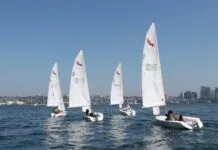

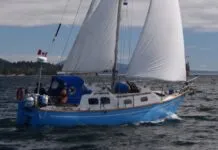



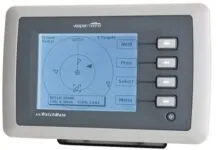
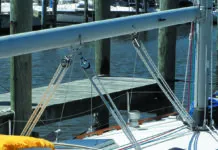

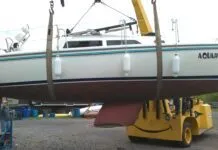
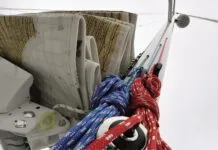
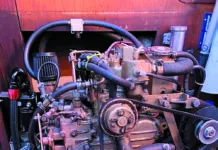

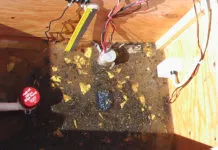

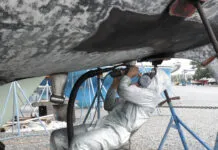



















What issue did this article appear in?
The prices in this article are from 2006 /2019??
I’m interested in the Garhauser vang but see only these vangs and prices:
Rigid Boom Vang RV20-1 DX => $679.80
Rigid Boom Vang RV20-1 SL => $599.50